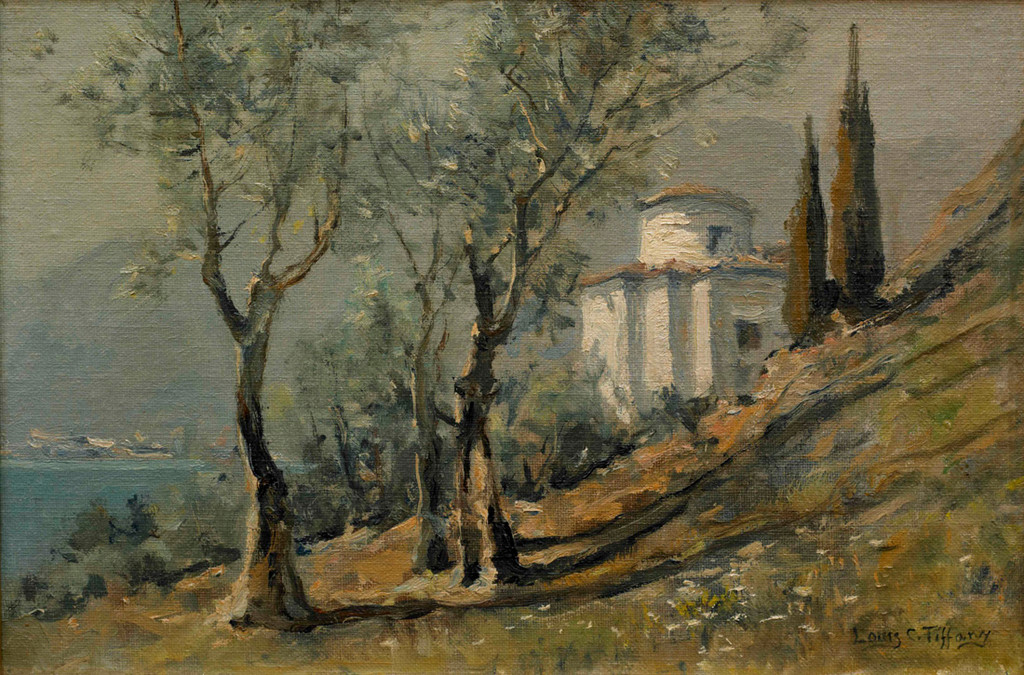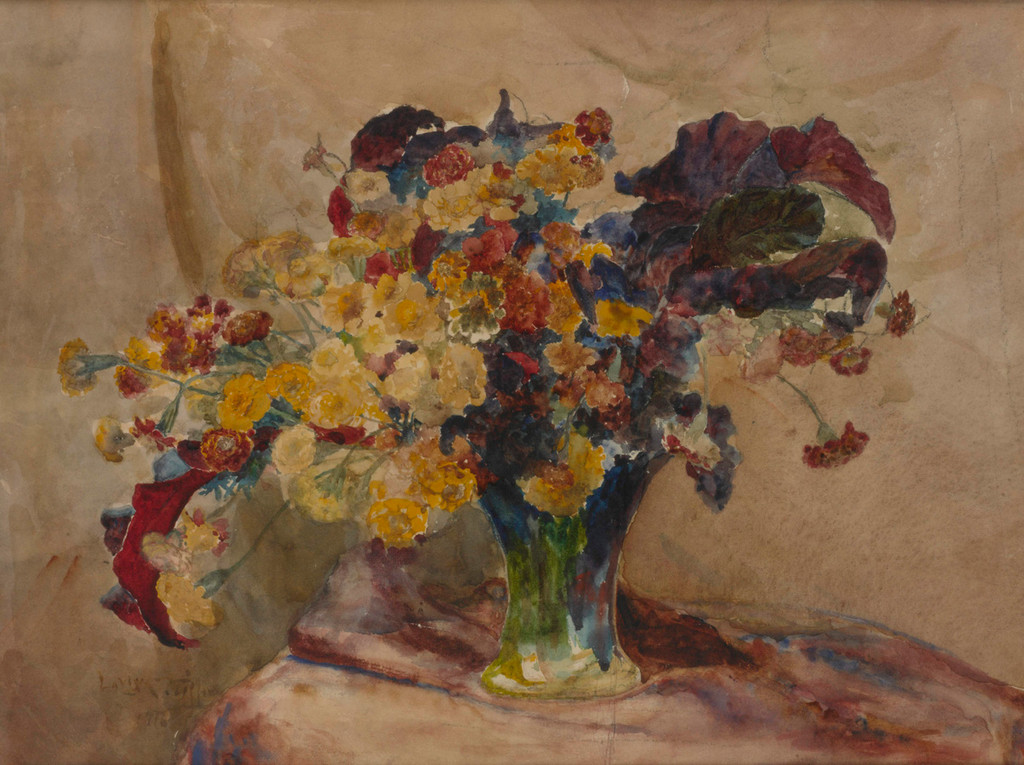Tiffany exhibit lights up Nassau County Museum of Art
Winter exhibits to warm the soul
The region’s art scene is bustling with activity during these seemingly endless winter months. Rejuvenate your spirit with a visit to one of our area museums. Here’s a sampling.
Nassau County Museum of Art shines brightly with the works of Louis Comfort Tiffany
The name Tiffany evokes that incredible stained glass and also that infamous “blue box” of sparkling baubles. Louis Comfort Tiffany, the son of Charles Louis Tiffany (the founder of the famous jewelry company) who distinguished himself with his own creative legacy, is the subject of this winter’s major exhibition at Nassau County Museum of Art.
Drawn from an important private Long Island collection (the collector wishes to remain anonymous), “The Paintings of Louis Comfort Tiffany: Works from a Long Island Collection,” showcases approximately 125 oils on canvas and watercolors on paper by the artist, who is most closely associated with the Art Nouveau and Aesthetic movements. This exhibit, according to the museum’s Education Director Laura Lynch, represents the first time these paintings have been shown as a collection in their entirety.
The exhibit offers an uncommon glimpse into the artist’s personal world. It also includes examples of Tiffany’s decorative arts, especially his stained glass lamps and windows.
Tiffany (who was born in 1838 and died in 1933) – the founder of Tiffany Studios – was a talented painter besides a being master glassmaker renowned for his stained glass objets d’art such as lamps, mosaics, and windows. He actually started out as a painter before becoming interested in glasswork and often documented his travels by painting oils on canvas or watercolors on paper.
He created light-filled works suffused with Orientalism and sensuous Art Nouveau lines. Tiffany’s paintings and decorative arts contrasted sharply with the era’s prevailing dark Victorian décor and had a powerful influence on the evolving aesthetics of the wealthy and famous of the Gilded Age.
“Most people associate Tiffany as a master of glass art objects,” Lynch said. “People are very surprised when they see his other works and his devotion to painting. He created a broad range of works that range from Orientalism to landscapes to water color and personal images of his home at Laurelton Hall. You’ll see how his technique varies from gallery to gallery in this exhibit.”
Tiffany lived in nearby Laurelton Hall, his 60-acre Laurel Hollow estate, which was built in 1905 and destroyed by fire in 1957. It is the subject of some of the paintings in this exhibit. But the main focus is his paintings inspired by his travels to the Middle East and North Africa. Tiffany was one of the few American painters of his day to take an interest in that part of the world, Lynch explained.
“The focus of this exhibit is on his travels and the Orientalist movement. He had a craving for things exotic,” Lynch said. “His quest for light, atmosphere and color is evident in his paintings. And it translates into his stained glasswork, where you also see influences of his travels.”
The paintings include many subjects inspired by his trips to the Middle East, among them, Camel Watering Hole; Luxor, Egypt; Travelers Near Cairo; and Temple of Ramses, Abu Simbel, as well as subjects closer to home such as Pushing Off the Boat at Sea Bright, New Jersey and Cows in Pond and Fountain at Laurelton Hall and View of Laurelton Hall.
Mixed in with the paintings are lamps and glasswork from his Tiffany Studio to round out the exhibit, which runs through March 18.
“The link between his paintings and glass is quite fascinating,” Lynch said. “He continued to look for qualities of color and light in all aspects of his life’s work. It was a lifelong quest for beauty. He wanted to bring that beauty – through painting and the glassworks – to everyone.”
Hofstra Museum’s scenes of an ever-changing landscape
Hofstra University reached into its extensive holdings to showcase a global view of the world we live in, presented in “The Disappearing Landscape: Selections from the Hofstra University Museum Collection.” The exhibit, on view through March 18, features works from the museum’s permanent collection that capture the ever-changing global landscape.
“The importance of land and the environment has been a dominant artistic theme for centuries. In The Disappearing Landscape, we showcase works from the Museum’s collection that underscore the value and fragility of our ever diminishing natural resources,” explained Hofstra University Museum Executive Director Beth E. Levinthal.
This original exhibition, curated by Associate Director of Exhibitions and Collections Karen T. Albert, features 27 drawings, paintings, photographs, prints, and sculpture created by artists from a range of countries, including the United States, Russia and Japan. These works date from the early 19th century to the 21st century. Artists represented include: Alexander Calder, Harry Callahan, Lucien Clergue, Currier & Ives, Edwin Dickinson, Sally Gall, April Gornik, James McDougal Hart, Katsushika Hokusai, Donald Resnick, Eugene Ruhkin, Ivan Ivanovich Shishkin, and Michael A. Smith.
Over at Hofstra’s Emily Lowe Gallery, a related exhibit, “Barbara Roux: Environments,” presents the work of the Long Island-based artist Barbara Roux. Roux – who is a combined-media artist, poet, and active conservationist – uses her daily interaction with natural habitats to inform her art. This exhibition, which opened earlier this month and runs through April 5, includes drawings, photographs, poetry, and sculpture. Roux alters but does not disguise the elements from nature that comprise her sculpture. Her work focuses on the forest and cove where she lives on the north shore. She hopes to inspire in her viewers an interest in the natural habitats and, from this interest, a desire to protect them.











